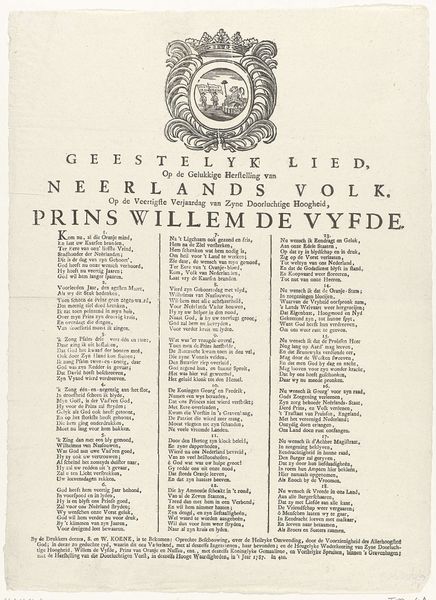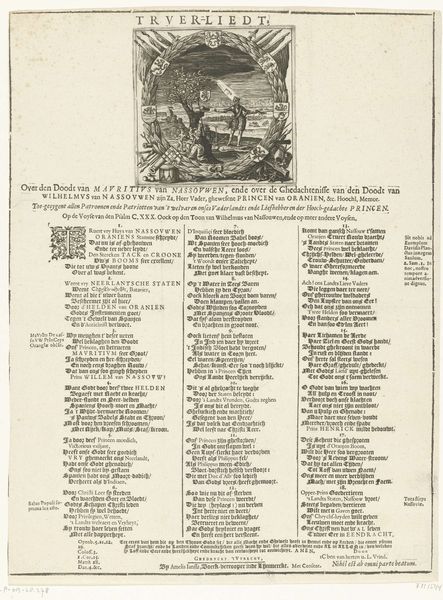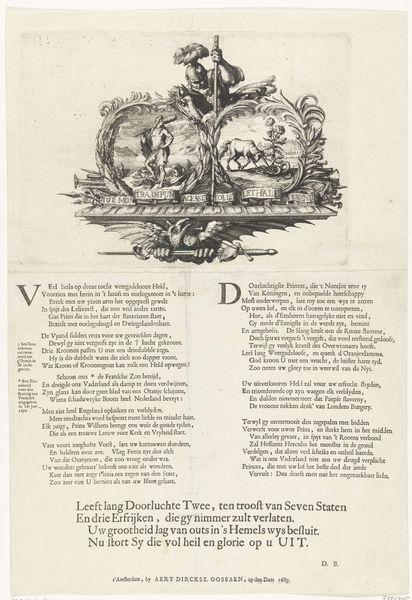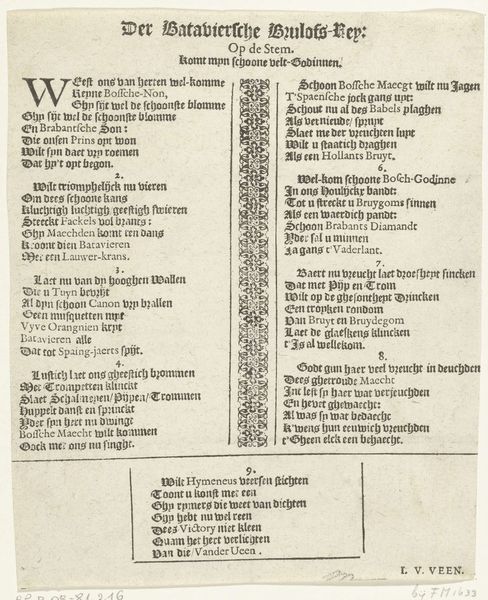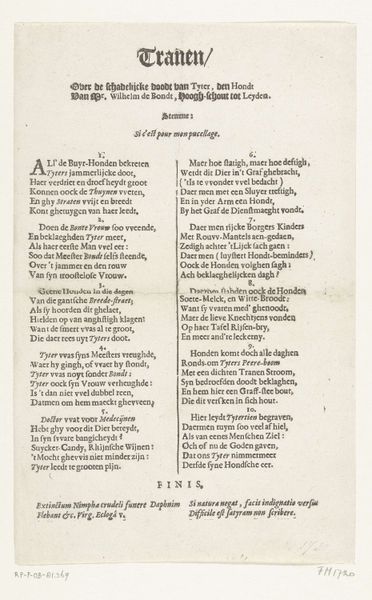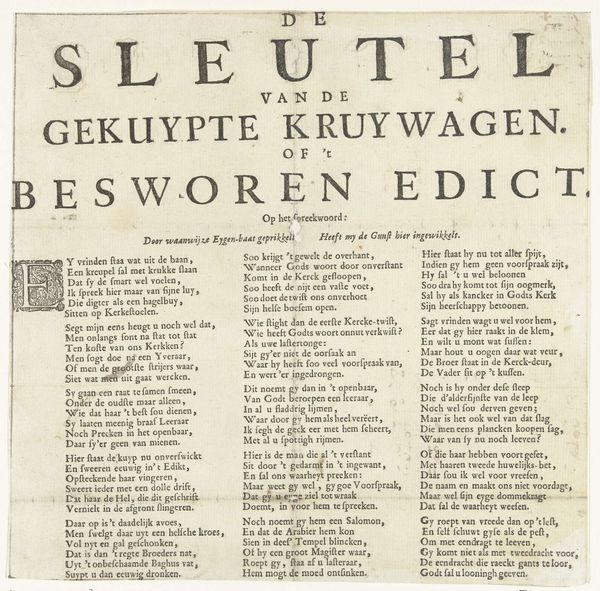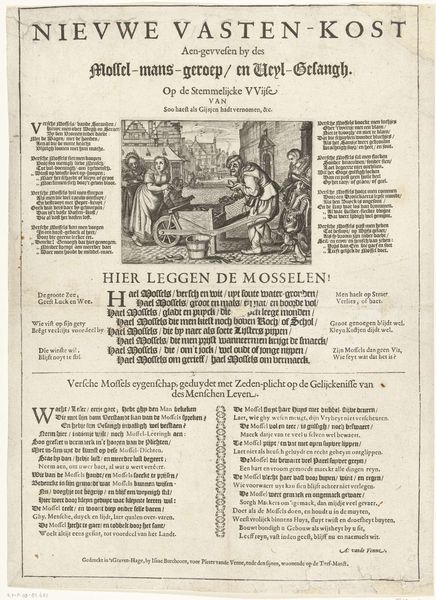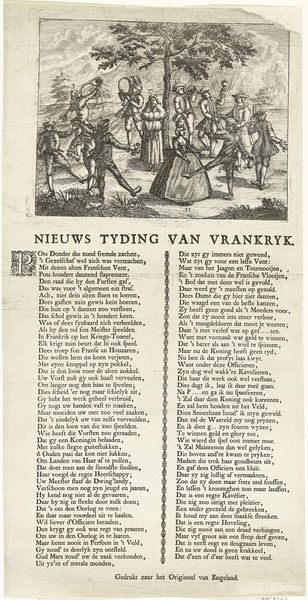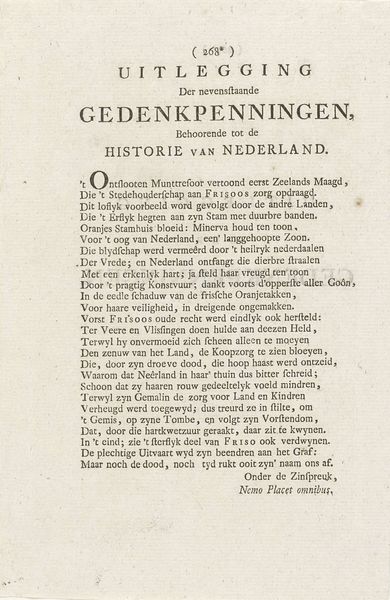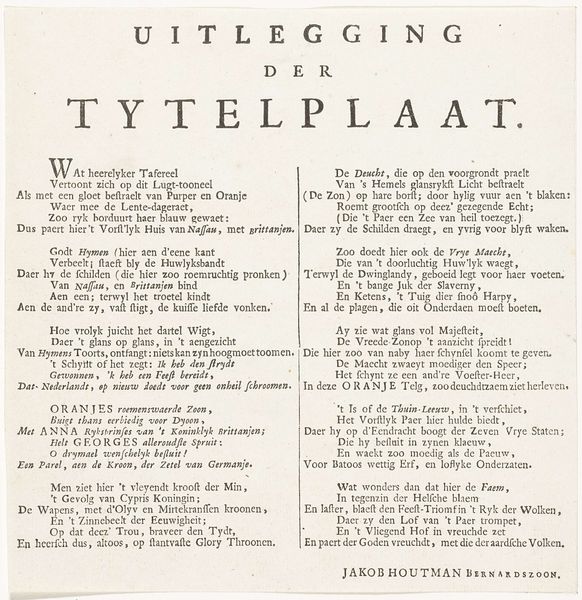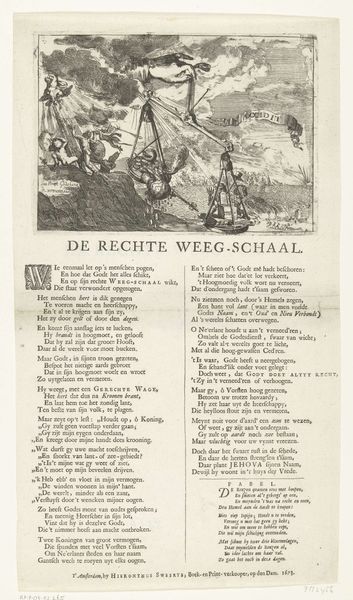
print, textile, typography, engraving
#
aged paper
# print
#
old engraving style
#
hand drawn type
#
textile
#
typography
#
history-painting
#
engraving
Dimensions: height 400 mm, width 305 mm
Copyright: Rijks Museum: Open Domain
Curator: Let's turn our attention to "Lied op het herstel van prins Willem V, 1787," a print dating back to 1787 from an anonymous creator, currently held in the Rijksmuseum. Editor: My initial impression is that it's a very formal announcement. Stark typography, symbolic imagery... it feels like an official proclamation of sorts, despite being printed on what looks like aged paper. Curator: Indeed. This engraving commemorates the restoration of Prince William V. Its creation falls within a tumultuous period of Dutch history, filled with political unrest and the struggle between Patriot and Orangist factions. We see that struggle represented even through typography and its distribution method. Editor: Ah, I see the Dutch Lion prominently displayed, sword in paw! Lions are such a staple symbol of power and national pride throughout the ages, but particularly strong here against the text in its ornate frame, flanked by floral decorations above seriffed fonts. The garlands lend it an almost celebratory tone, while it remains imposing. Curator: The lion embodies Dutch sovereignty and authority. Note the use of typography. The entire broadside functioned as propaganda. Its rapid reproduction meant the Orangist message quickly reached a broad audience. This specific symbolism had a powerful effect at this specific moment in history. Editor: And that message, clearly, was one of triumphant return. How fascinating that a symbol and carefully worded phrases could incite action. One wonders what emotions this provoked back then in the average citizen. Did it generate feelings of security, resentment, national pride...? Curator: These prints played a vital role in shaping public opinion and legitimizing political power. Editor: It's a striking example of how symbols and text intertwine to influence culture, how carefully orchestrated imagery carries historical weight beyond just the aesthetic. It makes you reflect on symbols of our own time. Curator: Agreed. This piece shows us art's pivotal function during this period—as both historical document and political tool. It reminds us that art can indeed shape nations.
Comments
No comments
Be the first to comment and join the conversation on the ultimate creative platform.
